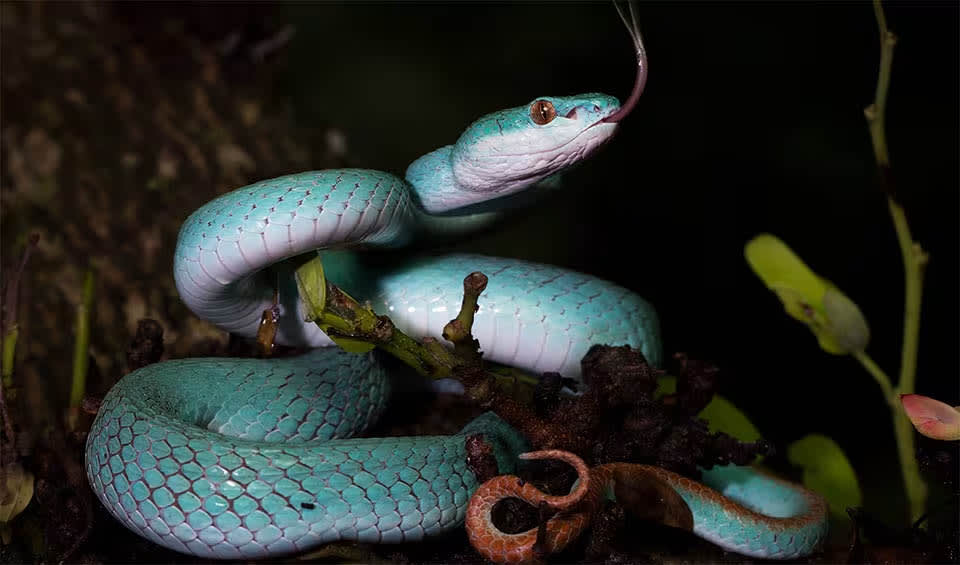Trimeresurus – Asian palm pit vipers
Their venom, a potent blend of molecules honed through time, serves as both a weapon and a tool for survival
Comprising a wide array of snakes, they are commonly called Asian pit vipers or tree vipers. These snakes are true masters of disguise, living life high among the leaves and branches of various habitats ranging from the humid and dense lowland rainforests to the misty, cooler realms of highland forests.
Like living jewels of the forest, tree vipers exhibit stunning colors. Their scales are smooth and often have a sheen that catches the light, sparkling like gemstones nestled within the foliage. The color palette of these snakes is not just for show; it’s a testament to their evolutionary success, allowing them to blend into their environment with such effectiveness that they become nearly invisible. The greens, yellows, and sometimes even striking reds and blues of their bodies mirror the environment around them so well that they can avoid detection by both predators and prey.
These snakes are not only beautifully colored but also equipped with a unique sensory tool – a heat-sensing pit located between the eye and nostril on either side of the head. This adaptation allows them to detect warm-blooded prey in the cool of the night or the dense underbrush where vision is limited.
Despite their beauty and fascinating biology, Trimeresurus vipers have a venomous bite, and they use it to subdue their prey, which includes small mammals, birds, and sometimes even other reptiles. However, these snakes are generally shy and will avoid human encounters if given the chance.
Species in this genus
Indonesian pit viper
With rare blue hues, shimmering like tropical rain on leaves, make it one of nature’s most dazzling hidden treasures
Large-eyed pitviper
Imagine gazing into its eyes—large, resplendent orbs that mirror the lush foliage around them
Philippine pit viper
A beautiful but deadly snake adorned with intricate patterns and splotches




